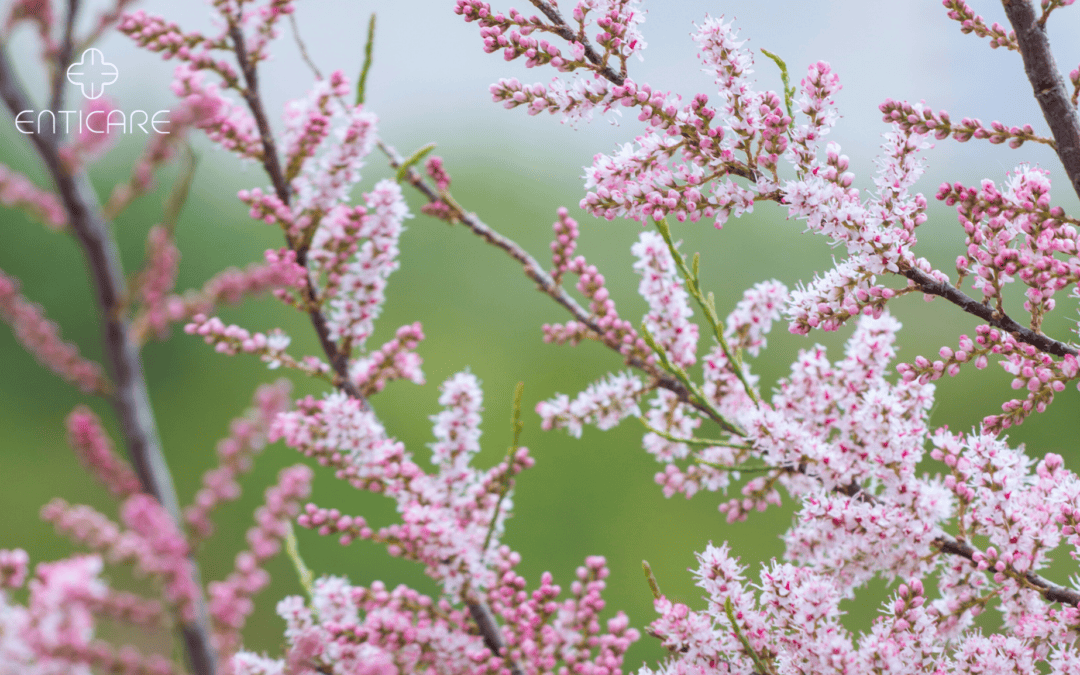The salt cedar, with its delicate pink flowers and feathery foliage, might seem like a harmless addition to landscapes. However, for some individuals, this seemingly innocuous tree harbors a hidden threat – salt cedar allergies.
Salt cedar, also known as tamarisk, is often admired for its drought tolerance and aesthetic appeal. While valued in some regions, it can trigger allergic reactions in sensitive individuals due to its wind-borne pollen.
Salt cedar is not native to North America but was introduced in the 18th century. Today, it thrives in arid regions with suitable climates:
Widespread Presence: Found in many states, particularly in the Southwest (Arizona, California, Nevada) and along waterways in the Great Plains.
Invasive Species: Salt cedar’s aggressive growth habits make it an invasive species in some areas, displacing native vegetation and altering ecosystems.
Understanding the distribution and potential invasiveness of salt cedar can help manage its impact on allergies and the environment.
Season and Characteristics of Pollen Release:
Salt cedar allergies typically occur during the late spring and early summer months, from April to June. Here’s a breakdown of the key factors:
Flowering Period: Salt cedar releases its pollen during this period, carried by wind and potentially triggering allergic reactions.
Microscopic Pollen: Invisible to the naked eye, the pollen is easily inhaled, increasing the risk of triggering allergy symptoms.
Allergenicity: While not as common as other seasonal allergies, salt cedar pollen can cause reactions in sensitive individuals.
Signs & Symptoms of Salt Cedar Allergies:
Salt cedar allergies can manifest in various ways, often mimicking other seasonal allergies. Here are some common signs to watch out for:
Hay fever: Runny or stuffy nose, sneezing, itchy and watery eyes.
Sinus issues: Facial pressure, headaches, and postnasal drip.
Respiratory problems: Coughing, wheezing, difficulty breathing (in severe cases).
Skin reactions: Hives, rashes, or eczema can develop in some individuals.
Causes of Salt Cedar Allergies:
The human immune system mistakenly identifies the protein structures in salt cedar pollen as a threat, triggering an allergic response. This response causes the release of chemicals like histamine, leading to allergy symptoms.
Risk Factors for Salt Cedar Allergies:
Certain factors can increase your risk of developing salt cedar allergies:
Family history of allergies: Having a family member with allergies makes you more susceptible.
Existing allergies: Individuals with allergies to other wind-borne pollens like ragweed might experience cross-reactivity with salt cedar pollen.
Exposure: Living in areas with high salt cedar concentrations increases your chance of developing allergies.
Preventing and Managing Salt Cedar Allergies:
While complete prevention might be difficult, here are some tips for management:
Minimize exposure: During peak pollen season, stay indoors during the daytime, keep windows closed, and use air purifiers at home.
Medication: Over-the-counter antihistamines and nasal corticosteroids, as prescribed by your doctor, can alleviate allergy symptoms.
Allergy shots (immunotherapy): In specific cases, your doctor might recommend allergy shots to desensitize your immune system to the pollen over time.
Treatment for Salt Cedar Allergies:
If you experience persistent or severe allergy symptoms, consult a healthcare professional for proper diagnosis and a personalized treatment plan. Treatment options may include:
Prescription medications: Stronger antihistamines or nasal corticosteroids might be necessary for severe cases.
Allergy drops or tablets: Sublingual immunotherapy provides an alternative to allergy shots for long-term management.
Salt Cedar, with its complex interplay in North American ecosystems and potential health impacts, demands recognition and understanding. This blog, crafted to educate and empower, invites you to navigate the multifaceted landscape of Salt Cedar with newfound knowledge. Take that first step towards a healthier lifestyle. Explore treatment possibilities with Enticare. Connect with us at 480-214-9000!

